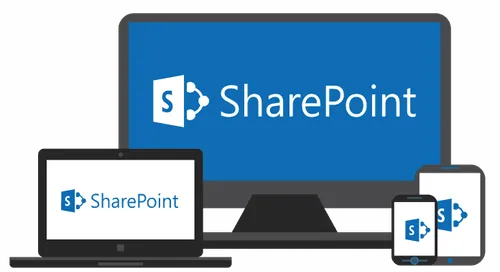
Knowledge base
October 09, 2020
What is SharePoint and why should you use it?
Remote mobile employees still need tools to share and collaborate with each other. Business teams want to work together and get the job done efficiently. Microsoft SharePoint Online helps with that.
SharePoint is used in science and education, law and government, finance, computers, electronics and technology verticals. The largest market share worldwide is in the United States. Other top markets include Canada, the United Kingdom and Australia.
If you subscribe to one of Microsoft 365’s business subscriptions, you already have access. SharePoint is Microsoft’s document management and collaboration tool. Users connect to SharePoint through their own browser wherever they are. SharePoint streamlines the process of tracking workflow and documents. But that’s not all the platform offers.
SharePoint Core Features
Companies get several benefits from using SharePoint.
Cooperation. Now you can store documents in a folder on a server. SharePoint lets you create workflows, view document history, track file access, and more.
Organization. SharePoint greets users with a screen that shows:
· What they deal with the most;
· Sites they follow;
· Recommended links;
· A search bar
By having recent activities and access to important links and relevant sites as an access point to the platform, your people can stay productive.
Within SharePoint sites, you can also create lists to collect items. These can be announcements, contacts, links, or a to-do list.
Integration
SharePoint works with Word, Excel, Outlook, PowerPoint, and more. A team can create a shared notebook to store information in one place and evolve with it as projects do.
Create a community
SharePoint websites are a central location for teams to find what they need. Human resources can set up a site with its updates and important forms. This allows everyone to quickly find the information they need.
Versioning
Don’t worry about emailing documents to different team members for input. A SharePoint document becomes the only source for one current document.
Search
Advanced search capabilities make it easy to search a site library. Or users can search for content on all SharePoint sites they have access to. Avoid decentralization where assets are distributed across employees’ PCs or different departmental silos.
Data insights
By keeping all company data in one place, they are easier to assess. Determine what is being used or who has access to what to identify trends. Site administrators, owners, and members can track the number of views, popular items, how often people interact with the site, and more.
Share news
Keep teams engaged and informed with the news feature. Users post updates or share reports and documents in the newsfeed section of the website.
Mobility
Users can upload files and open them anywhere. SharePoint works with Microsoft Edge, Internet Explorer, Google Chrome, or Mozilla Firefox browsers. There’s even a mobile app that lets people stay connected from their mobile devices.
Why SharePoint?
SharePoint bundles many features together in a dedicated platform that is suitable for different industries. Replace inefficient paper-based processes with a centralized, online repository of documents. This can help accountability and reduce business bottlenecks.
SharePoint helps you build personal, team, project, customer and/or vendor-oriented websites. Avoid unwieldy email threads or confusing phone meetings. Chat online and track operations in SharePoint.
You can also automate business processes. SharePoint lets you create intelligent workflows for easy tasks. For example, you can streamline processes where SharePoint automatically sends files for approval. When you’re done, you’ll be notified that the review is complete.
Key differences between SharePoint on-premises and SharePoint Online
Time and time again we have heard the arguments for migration to the cloud. It’s as inevitable as gravity: “We’re moving our business to the cloud.” But not everyone wants (or can) allow their business information from local servers, away from the office. Using SharePoint on-premises for your business in such a setup is now a viable alternative.
The advantage of SharePoint on-prem is the ability to stay in the field of your organization (of course) while at the same time taking advantage of some of the capabilities of Office 365. However, SharePoint Server has some important differences and limitations compared to SharePoint Online.
Success with SharePoint
You need to develop an implementation strategy and also train employees to understand the value of SharePoint. Know that companies without IT resources struggle to customize features and build automated workflows.
Source: itindianapolis
Want to know more?

Related
blogs
Tech Updates: Microsoft 365, Azure, Cybersecurity & AI – Weekly in Your Mailbox.









